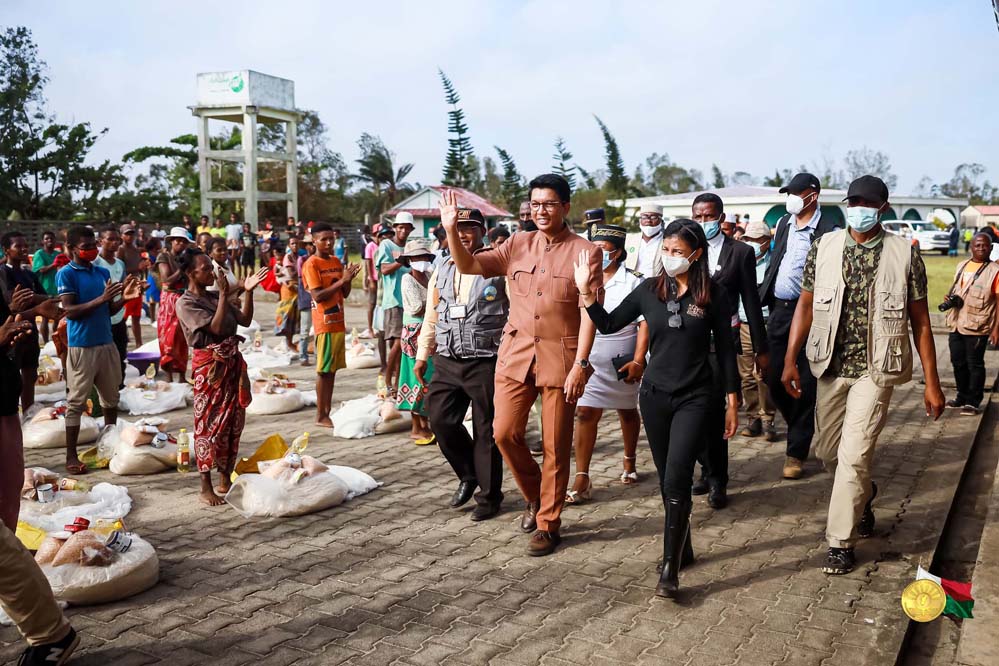How To Avoid Humanitarian Crisis As Tropical Cyclone Batsirai Batters Madagascar

On Feb. 7, 2022, Madagascar, an African island, experienced a devastating cyclone that claimed lives and left a trail of destruction. Cyclone Batsirai swept across the island at a speed of 165 kilometers per hour. At the moment, experts are still assessing the humanitarian crisis created by the cyclone. Meteorologists said the southwest Indian Ocean region cyclone season has intensified, deviating from the usual occurrences.

Counting the Loss
So far, 20 people are reported to have lost their lives and 55,000 others displaced from their homes. The most affected by this devastating natural disaster are children. UNICEF, UN’s children agency, revealed that children make up half of the island’s population. Nirina Rahaingosoa, a resident of Fianarantsoa, made this detailed observation.
ALSO READ: Can African Overcome Desertification Using This Creative Agricultural Practice?
“We saw only desolation: uprooted trees, fallen electric poles, roofs torn off by the wind, the city completely underwater.”
Looming Hunger after Cyclone Bartsirai
Cyclone Batsirai left most of the farmlands badly damaged and tons of food crops destroyed. For instance, the east part of the country which is mainly an agricultural area was first hit by the cyclone before moving to other areas. Also, in the west part of the island—considered the country’s breadbasket—rice fields are completely submerged.
The humanitarian crisis on the island called for the government’s immediate attention. President Andry Rajoelina of Madagascar and his wife first lady Mialy Rajoelina visited the affected families. The team saw to it that the affected families received Vatsy Tsinjo assistance. Vatsy Tsinjo basically means kind donations of basic products.

The Cause of Rising Natural Disasters in Madagascar
Just like in other parts of the world, Madagascar is also experiencing a change in weather patterns. For instance, cyclones have increased both in frequency and intensity with the graph sharply rising at the start of 2022.
ALSO READ: Madagascar: A Destination You Must Visit At Least Once In Your Lifetime
The island had experienced yet another deadly cyclone two weeks before Cyclone Batsirai hit. Cyclone Ana left 55 people dead and 130,000 others displaced from their homes. Parts of Madagascar, Malawi, Mozambique, and Zimbabwe felt the destruction.
How to avoid the Looming Humanitarian Crisis in Madagascar
Unfortunately, Cyclone Batsirai left at least 10,000 people in the dark for several days. World Food Programme predicts that about 595,000 people will feel the effects of the cyclone directly. Similarly, 150,000 more people risk being displaced by continued flooding and landslides. To sum it up, the current situation puts 4.4 million lives at risk according to the International Federation of Red Cross and Red Crescent Societies (IFRC).
Until the floodwaters recede, Madagascar will have to rely on food donations from her neighbors and the rest of the world to avoid the looming humanitarian crisis. Also, the country is in need of donations in the form of temporary shelters to house the displaced.
The Cause of Rising Natural Disasters in Madagascar
During the recent African leaders’ meeting in Addis Ababa, Cyril Ramaphosa, South Africa’s president, said that Africa is experiencing the worst effects of global warming phenomena. The effects include floods, drought, and cyclones.
According to World Health Organization, the biggest threat to the health of humanity is climate change. However, scientists believe that the worst effects of climate change are avoidable. But, it will require the effort of all stakeholders and governments around the globe.
ALSO READ: Why WHO May Never Recognize Madagascar’s COVID-19 Remedy
This will be possible if the set goals to end deforestation by 2029, manufacturing of new zero-emission cars within 20 years, and a ban on coal use are implemented within the stipulated timeline.






Responses